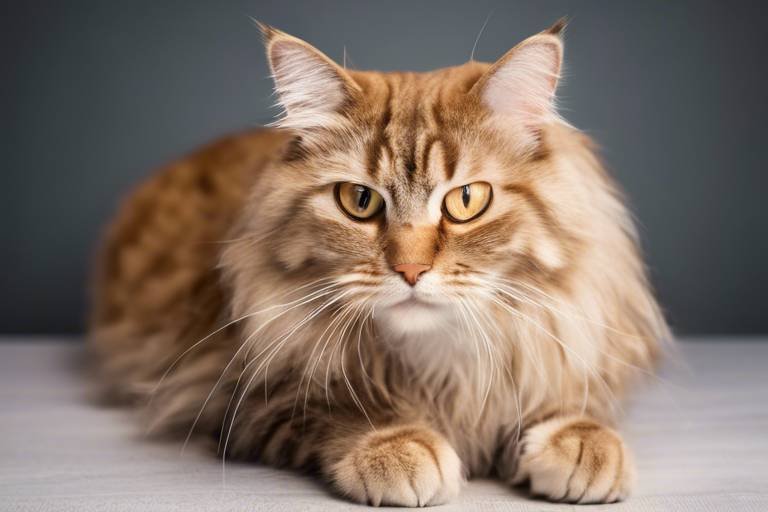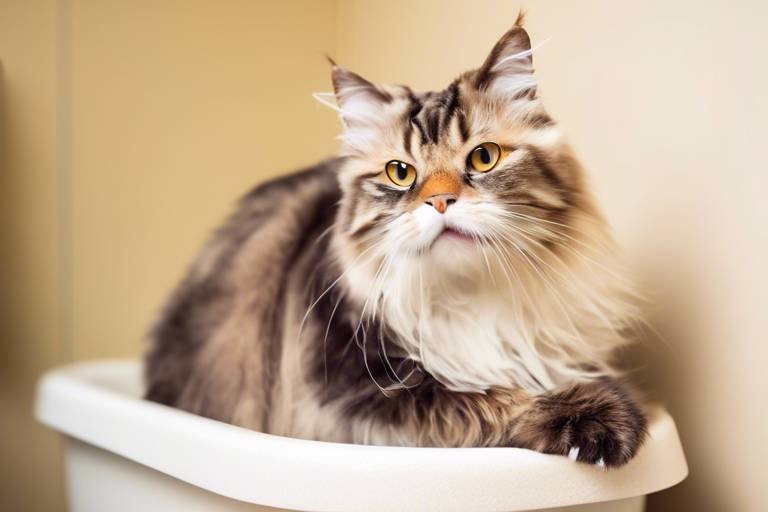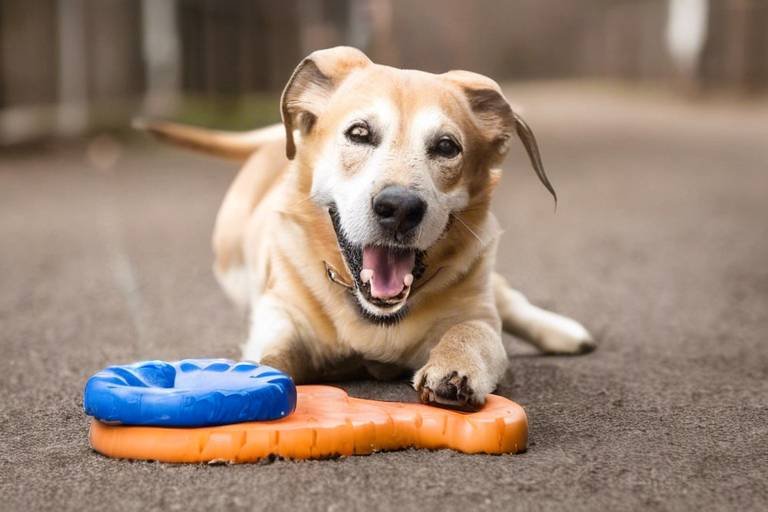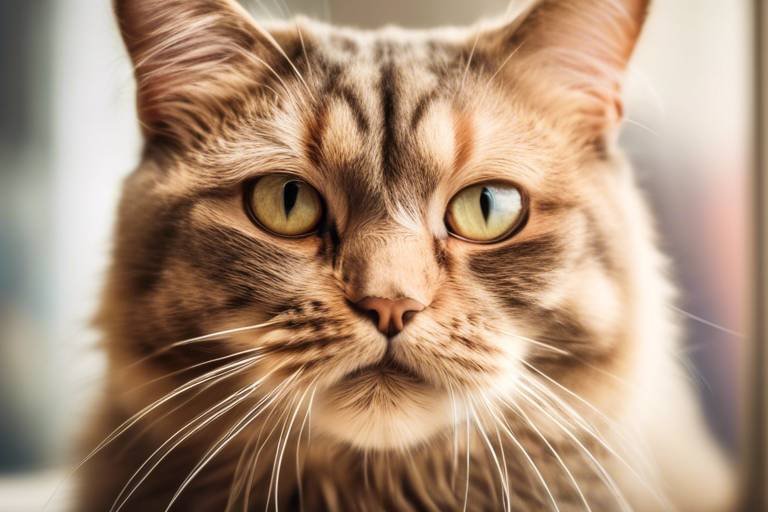Understanding the Best Bedding for Senior Pets
As our furry companions age, their needs change significantly, and one of the most crucial aspects of their comfort is the bedding they rest on. Selecting the right bedding for senior pets is not merely a matter of aesthetics; it’s about ensuring their overall well-being. Just like humans, pets experience a variety of physical changes as they grow older, which can affect their sleep quality and comfort levels. Imagine trying to sleep on a hard surface after a long day—uncomfortable, right? This is precisely what our senior pets might feel if they don’t have the right bedding. In this article, we’ll delve into the essential aspects of choosing the best bedding for senior pets, focusing on comfort, support, and health benefits that will keep your beloved animals happy and cozy during their golden years.
Proper bedding is paramount for senior pets, as it plays a vital role in their health and comfort. As pets age, they can develop various health issues, including arthritis and joint pain. Having the right bedding can help alleviate these problems by providing the necessary support to their aching joints. Think of it as giving them a comfy cloud to rest on, which helps them recover from the wear and tear of daily activities. Additionally, quality bedding can help prevent pressure sores, which are common in older pets who may spend more time lying down. By ensuring your pet has an appropriate sleeping surface, you’re not just investing in their comfort; you’re also taking proactive steps to enhance their overall quality of life.
When it comes to pet bedding, there’s a wide variety of materials available, each with its unique benefits. Understanding these options can help you make an informed decision that best suits your senior pet’s needs. Here are some popular materials to consider:
- Memory Foam: Offers excellent support by contouring to your pet's body, reducing pressure on joints.
- Orthopedic: Specifically designed to provide additional support for aging pets, often featuring firmer surfaces.
- Hypoallergenic: Ideal for pets with allergies, these materials resist dust mites and other allergens.
Each type of bedding material caters to different needs and preferences, so it’s essential to consider what will work best for your furry friend.
Memory foam bedding is particularly beneficial for senior pets. This material has a unique ability to contour to your pet's body, providing optimal support and comfort. It's like a gentle hug that molds to their shape, helping to distribute their weight evenly. This feature is especially important for pets suffering from joint pain or arthritis, as it minimizes pressure points and allows for a more restful sleep. Moreover, memory foam can help reduce discomfort during movement, making it easier for your pet to get up and down.
Another fantastic aspect of memory foam is its ability to regulate temperature. Many memory foam products are designed with breathable materials that help keep your senior pet cool in warmer climates and warm in cooler conditions. This temperature regulation is crucial for older animals, as they may have difficulty maintaining their body heat. Just picture your pet snuggled up in their bed, feeling just right—neither too hot nor too cold!
Durability is another key advantage of memory foam bedding. Unlike traditional pet beds that may flatten over time, memory foam retains its shape and support longer, providing a consistent sleeping surface. However, it’s essential to keep the bed clean and hygienic for your elderly pet. Most memory foam beds come with removable, washable covers, making maintenance straightforward. Regular cleaning not only ensures your pet's comfort but also helps prevent the buildup of allergens and odors.
Orthopedic bedding is designed specifically for older pets, focusing on joint support and pain relief. These beds often feature thicker, denser foam that provides superior support compared to standard pet beds. Think of orthopedic bedding as a luxurious mattress tailored for your pet's unique needs. Many of these beds are also designed with raised edges, providing a sense of security and a place to rest their heads. Investing in orthopedic bedding can significantly improve your senior pet's quality of life, helping them to rest better and feel more comfortable.
When selecting bedding for your senior pet, size matters. A bed that’s too small can restrict movement, making it uncomfortable for your pet to get in and out. On the other hand, a bed that’s too large may not provide the support they need. It’s essential to choose a bed that allows your pet to stretch out comfortably while still feeling secure.
To determine the appropriate size of bedding for your senior pet, you’ll need to measure them accurately. Here’s how:
- Measure your pet's length from the tip of their nose to the base of their tail.
- Consider their preferred sleeping position—do they curl up or stretch out?
- Choose a bed that’s at least 4-6 inches longer than your pet’s length for added comfort.
By taking these simple steps, you can ensure that your pet has the perfect sleeping space.
As pets age, their needs can change, making adjustable and multi-purpose beds an excellent option. These beds can be modified for different positions or even converted into various styles, catering to your pet's changing preferences. Imagine a bed that can grow with your pet, adapting to their comfort needs as they age. This flexibility not only enhances their comfort but also provides a cost-effective solution for pet owners.
Q: How often should I replace my senior pet's bedding?
A: It’s recommended to replace bedding every 1-2 years, or sooner if it shows signs of wear and tear.
Q: Can I use human mattresses for my pets?
A: While some human mattresses may be suitable, it’s best to choose bedding specifically designed for pets to ensure proper support and hygiene.
Q: What should I look for in hypoallergenic bedding?
A: Look for materials that resist dust mites and other allergens, and ensure they are easy to clean.

Importance of Proper Bedding
When it comes to our beloved senior pets, their comfort and well-being should be our top priority. Just like us, as pets age, they experience various changes in their bodies that can affect their quality of life. One of the most significant factors contributing to their overall health is proper bedding. So, why is this so crucial? Well, let’s dive into the reasons!
First and foremost, appropriate bedding can play a pivotal role in preventing joint pain and other age-related ailments. Senior pets often suffer from conditions like arthritis or hip dysplasia, making it essential to provide them with a supportive sleeping surface. A good bed can help alleviate pressure on their joints, allowing them to rest comfortably and wake up feeling rejuvenated.
Moreover, the right bedding can enhance your pet's sleep quality. Just imagine trying to catch some Z's on a lumpy, uncomfortable mattress! For senior pets, a restful sleep is vital for their physical and mental health. Quality bedding can help them fall asleep faster and stay asleep longer, which is particularly important for older pets who may have disrupted sleep patterns.
Another important aspect is temperature regulation. Senior pets are often more sensitive to temperature changes, and proper bedding can help maintain a comfortable sleeping environment. For instance, some materials can wick away moisture or provide warmth, ensuring your furry friend stays cozy whether it’s hot or cold outside.
Let’s not forget about hygiene! As pets age, they may have more accidents or require extra care due to health issues. Having the right bedding can make it easier to keep their sleeping area clean. Many options are machine washable or have removable covers, making maintenance a breeze.
In summary, investing in proper bedding for senior pets is not just about comfort; it’s about improving their quality of life. When you choose the right bed, you’re not only providing a cozy place for them to rest but also supporting their health and happiness as they age. Remember, a well-rested pet is a happy pet!
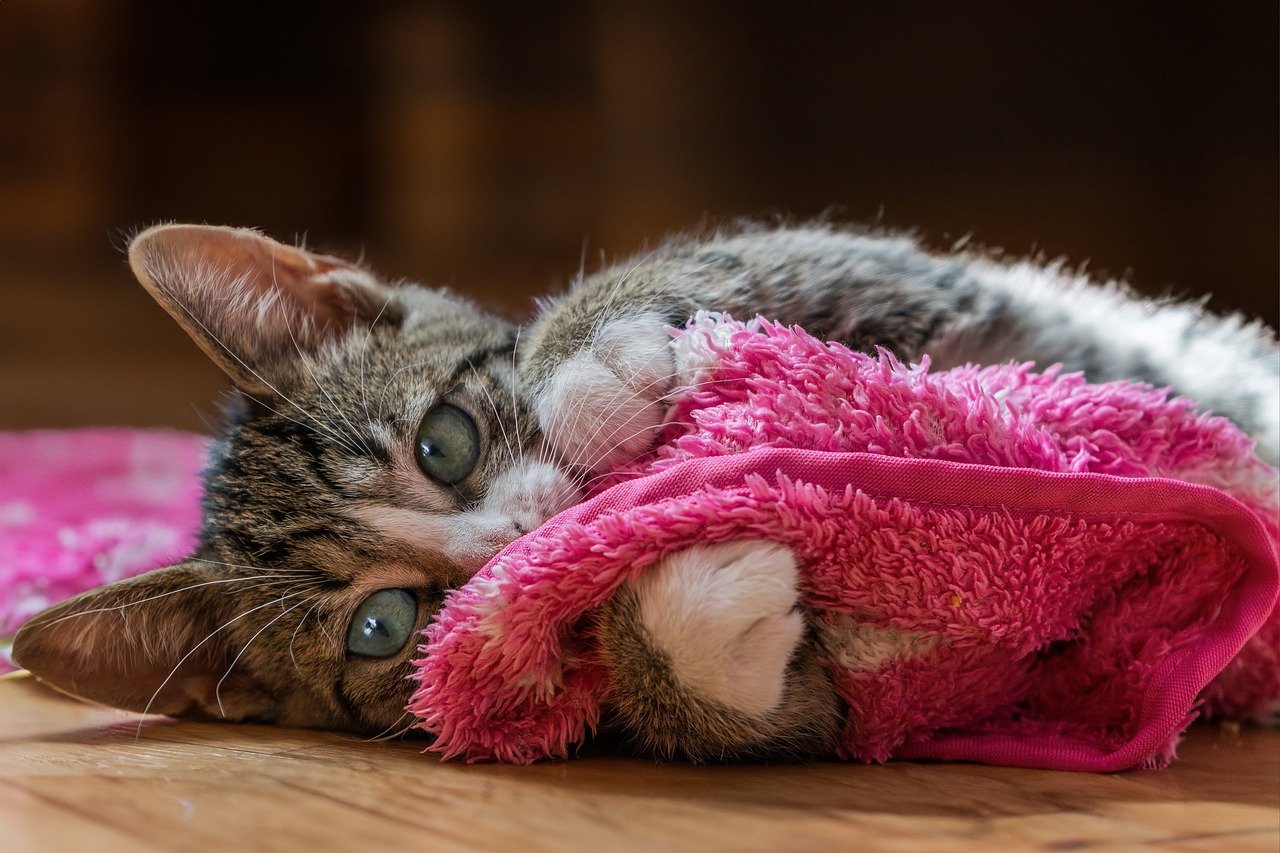
Types of Bedding Materials
When it comes to selecting the perfect bedding for your senior pet, the choice of material can make all the difference in their comfort and health. As our furry companions age, they often develop specific needs that require careful consideration. The right bedding can not only provide a cozy spot for them to rest but also support their joints and help prevent discomfort. Here, we’ll explore a variety of bedding materials that cater to different needs and preferences, ensuring that your beloved pet gets the best possible care.
One of the most popular options is memory foam. This material is renowned for its ability to contour to the shape of your pet's body, providing exceptional support for aging joints. Imagine how a warm hug feels; that’s what memory foam does for your pet! It cradles their body, distributing weight evenly and reducing pressure points. This is especially important for senior pets, as they are more susceptible to joint pain and arthritis. By choosing memory foam, you’re giving your pet a soft, supportive haven to relax and rejuvenate.
Another excellent choice is orthopedic bedding, specifically designed to address the unique challenges faced by senior pets. Orthopedic beds typically feature higher density foam that offers superior support for joints and muscles. They are particularly beneficial for pets with arthritis or other mobility issues. Think of it as a personalized mattress that provides the right amount of firmness where it’s needed most. Just like humans, pets benefit from a bed that supports their body properly, helping them to achieve a restful sleep.
For those pets with allergies or sensitive skin, hypoallergenic bedding is a fantastic option. These materials are designed to resist allergens and irritants, ensuring a clean and safe sleeping environment. Hypoallergenic beds often use materials that are less likely to harbor dust mites, mold, and other allergens, making them ideal for pets prone to skin issues. If your pet is sneezing or scratching more than usual, it might be time to consider a hypoallergenic option.
| Type of Bedding | Benefits | Best For |
|---|---|---|
| Memory Foam | Contours to body, reduces pressure points | Pets with joint pain or arthritis |
| Orthopedic | High-density support, promotes joint health | Older pets needing extra support |
| Hypoallergenic | Resists allergens, safe for sensitive skin | Pets with allergies or skin issues |
Additionally, there are cotton and fleece options that provide softness and warmth. Cotton bedding is breathable and easy to wash, making it a practical choice for pet owners. Fleece, on the other hand, offers a cozy and warm environment, perfect for those chilly nights. Both materials can be great for pets that enjoy snuggling into their bedding.
As you consider the best bedding for your senior pet, remember that comfort and support are paramount. Each pet is unique, and their preferences may vary. It’s essential to observe how your pet reacts to different materials and choose one that suits their individual needs. After all, a well-rested pet is a happy pet!
Memory Foam Benefits
This article explores the essential aspects of selecting appropriate bedding for senior pets, ensuring their comfort, support, and overall well-being as they age.
Discover why proper bedding is crucial for senior pets, focusing on their health, comfort, and the prevention of joint pain or other age-related issues.
Explore the various materials available for pet bedding, including memory foam, orthopedic, and hypoallergenic options, each catering to different needs and preferences.
When it comes to providing the best comfort for our beloved senior pets, memory foam bedding stands out as a top choice. This innovative material is designed to contour to the unique shape of your pet's body, offering support where it's needed most. As pets age, their joints can become stiff and painful, making it essential to provide them with a sleeping surface that alleviates pressure points. Memory foam does just that! By distributing weight evenly, it helps to reduce the risk of developing sore spots, which can be particularly bothersome for senior pets.
Moreover, memory foam is not just about comfort; it also promotes better sleep quality. Just like humans, pets require a good night's sleep to maintain their health and energy levels. With the right bedding, your furry friend can enjoy deeper, more restorative sleep. Imagine how much better they could feel after a night of uninterrupted rest! This can lead to increased activity levels during the day, making them happier and more engaged.
Another fantastic benefit of memory foam is its ability to regulate temperature. Senior pets can be sensitive to heat and cold, and having bedding that adapts to their body temperature can make a significant difference in their comfort level. Memory foam tends to retain heat, which can be cozy in cooler months, but many products now feature cooling gel layers that help dissipate heat during warmer weather. This adaptability means your pet can stay comfortable in various climates, which is essential for their health.
Durability is another crucial factor to consider when selecting bedding for senior pets. Memory foam mattresses are often made with high-quality materials that can withstand wear and tear, ensuring they last longer than traditional bedding options. However, it’s important to note that proper maintenance is key to keeping this bedding hygienic and fresh. Most memory foam beds come with removable, washable covers, making it easy to keep them clean. This is particularly important for older pets, who may have accidents or require regular cleaning due to shedding or other factors.
In summary, memory foam bedding is an excellent investment for senior pets, offering unparalleled comfort, support, and durability. Not only does it help relieve joint pain and improve sleep quality, but it also adapts to your pet's temperature needs and is easy to maintain. Choosing the right bedding can significantly enhance your pet's quality of life as they age, ensuring they remain comfortable and happy.
Learn how to determine the appropriate size of bedding for your senior pet, ensuring they have enough space to move comfortably.
Get tips on how to accurately measure your pet to choose the right size bedding, considering their length and preferred sleeping position.
Consider the advantages of adjustable and multi-purpose beds that can accommodate your pet's changing needs as they age.
- What type of bedding is best for senior pets? Memory foam and orthopedic options are highly recommended for their support and comfort.
- How do I know what size bed to buy for my pet? Measure your pet from nose to tail while they are lying down to ensure a perfect fit.
- Is memory foam bedding easy to clean? Yes, most memory foam beds come with removable covers that are machine washable.
- Can memory foam help with my pet's arthritis? Absolutely! Memory foam provides excellent support and can alleviate pressure on painful joints.
Temperature Regulation
When it comes to ensuring the comfort of our beloved senior pets, temperature regulation plays a pivotal role. Just like humans, our furry friends can be sensitive to temperature changes, and as they age, their ability to regulate body temperature may diminish. This is where the right bedding becomes essential. Memory foam bedding is particularly beneficial because it not only provides support but also adapts to the pet's body temperature, helping to maintain a cozy environment. Imagine snuggling under a blanket that feels just right—this is what memory foam offers to our aging companions.
One of the remarkable features of memory foam is its ability to respond to heat. As your pet lies down, the foam softens in response to their body heat, contouring perfectly to their shape. This not only provides a snug fit but also helps in distributing their weight evenly, reducing pressure points that can lead to discomfort. It’s like having a personal cloud that cradles them gently, making it easier for them to relax and sleep soundly.
Moreover, the temperature-regulating properties of memory foam can be particularly beneficial in varying climates. During the hot summer months, the foam can help wick away excess heat, while in the colder months, it retains warmth, creating a comfortable sleeping environment. This dual functionality is crucial for senior pets, who may struggle with temperature extremes more than their younger counterparts. A good memory foam bed can truly be a sanctuary for them, regardless of the season.
In addition to memory foam, some beds come with cooling gel layers that enhance temperature regulation even further. These beds are designed to absorb and dissipate heat, ensuring that your pet stays cool during those sweltering summer days. It's like having an air conditioner for their bed! This feature can be particularly important for pets with thick fur or those who are prone to overheating.
To summarize, when selecting bedding for your senior pet, consider materials that not only provide comfort but also help regulate temperature. A well-chosen bed can make a significant difference in how your pet feels throughout the day and night. After all, a comfortable pet is a happy pet, and ensuring they have the right sleeping environment can contribute significantly to their overall well-being.
- What type of bedding is best for senior pets? Memory foam and orthopedic beds are highly recommended for their support and comfort.
- How do I know if my pet needs a new bed? Look for signs of discomfort, restlessness, or difficulty getting up after resting.
- Can I wash my pet's memory foam bed? Yes, most memory foam beds come with removable, washable covers for easy maintenance.
- Do senior pets need larger beds? It depends on the size of your pet; ensure they have enough room to stretch out comfortably.
Durability and Maintenance
When it comes to choosing bedding for senior pets, durability and maintenance are two crucial factors that cannot be overlooked. As our furry companions age, they often become less active and may require more support from their bedding. This means that the bedding needs to withstand wear and tear while also being easy to clean and maintain. After all, a comfortable bed is only as good as its ability to remain clean and hygienic.
One of the standout features of memory foam bedding is its durability. Unlike traditional pet beds that may flatten or lose their shape over time, high-quality memory foam retains its form, providing consistent support for your pet's joints. This is particularly important for senior pets, who may suffer from conditions such as arthritis or hip dysplasia. Investing in a durable memory foam bed can mean the difference between a restful night's sleep and a restless one, which can significantly affect their overall health and happiness.
In terms of maintenance, many memory foam beds come with removable, washable covers. This feature is a game-changer for pet owners. It allows for easy cleaning, ensuring that your pet's sleeping environment remains free from dirt, allergens, and odors. When selecting a bed, look for covers that are machine washable and made from hypoallergenic materials to further enhance your pet's comfort. Regular washing not only helps maintain hygiene but also prolongs the life of the bed itself.
Moreover, consider the following tips for maintaining your senior pet's bedding:
- Regular Cleaning: Aim to wash the bed cover at least once a week. This helps to remove hair, dander, and any potential allergens.
- Spot Cleaning: For quick clean-ups, use a damp cloth and mild detergent to spot clean any stains or messes.
- Check for Wear: Regularly inspect the bed for signs of wear and tear, such as tears or flattening. Addressing these issues early can prevent further damage.
In conclusion, when selecting bedding for your senior pet, prioritize options that offer both durability and easy maintenance. This not only ensures your pet's comfort but also makes your life as a pet owner easier. A well-maintained bed will provide a safe and cozy haven for your furry friend, promoting their health and happiness as they age gracefully.
1. How often should I clean my senior pet's bedding?
It is recommended to wash the bedding cover at least once a week to keep it clean and free from allergens.
2. What materials are best for senior pet bedding?
Memory foam and orthopedic materials are highly recommended for their supportive properties, while hypoallergenic covers can help reduce allergies.
3. How can I tell if my pet needs a new bed?
If you notice your pet struggling to get comfortable, showing signs of joint pain, or if the bed appears worn out, it might be time for a new one.
4. Can I use regular pet beds for senior pets?
While regular pet beds may suffice for younger pets, senior pets benefit significantly from specialized bedding that offers better support and comfort.
Orthopedic Bedding Options
When it comes to ensuring the comfort of our senior pets, orthopedic bedding stands out as a top choice. These specially designed beds offer crucial support that caters to the unique needs of aging animals. As pets grow older, they often experience joint pain, arthritis, and other mobility issues. Orthopedic beds are crafted to alleviate these discomforts by providing enhanced support and cushioning. Unlike standard bedding, which may not offer sufficient support, orthopedic options are engineered with specific materials that help distribute weight evenly, reducing pressure on sensitive joints.
One of the most significant advantages of orthopedic bedding is its ability to adapt to the shape of your pet's body. This contouring effect ensures that every part of your pet's body is supported, which can lead to better sleep quality. Imagine sinking into a cloud that cradles you just right—that's what orthopedic beds do for our furry friends. They allow pets to rest comfortably, which is essential for their overall health and well-being.
Moreover, many orthopedic beds come with features that enhance their functionality. For instance, some beds are made with memory foam layers that not only provide support but also help with temperature regulation. This is critical for senior pets, as they may have difficulty maintaining their body temperature. A bed that keeps them cool in the summer and warm in the winter can make a world of difference in their comfort levels.
When considering orthopedic bedding, it's essential to look for high-quality materials. Here are a few options to keep in mind:
- Memory Foam: Offers excellent support and conforms to your pet's body shape.
- Gel-Infused Foam: Provides cooling properties, ideal for pets that tend to overheat.
- High-Density Foam: Ensures durability and long-lasting support, preventing sagging over time.
Additionally, many orthopedic beds come with removable covers that are machine washable, making maintenance a breeze. This is particularly important for senior pets, as they may have accidents or require more frequent cleaning. Look for beds with waterproof liners to protect the foam from spills and odors, ensuring a hygienic sleeping environment.
In conclusion, investing in orthopedic bedding for your senior pet is not just a luxury; it’s a necessity. By providing the right support and comfort, you can significantly enhance their quality of life. As they age, every little bit of comfort counts, and orthopedic bedding can be a game-changer in their daily routine. So, as you shop for the perfect bed, remember to prioritize your pet's needs—after all, they deserve the best!

Choosing the Right Size
Choosing the right size of bedding for your senior pet is essential for their comfort and well-being. Imagine trying to sleep in a bed that’s either too cramped or excessively spacious; it just doesn’t feel right, does it? Just like us, pets need a cozy spot that makes them feel secure, while also allowing them enough room to stretch out. When selecting bedding, you must consider not only the dimensions of your pet but also their sleeping habits and preferences. This ensures that they can rest comfortably without feeling confined or exposed.
To determine the appropriate size of bedding, you’ll first want to measure your pet accurately. Start by assessing your pet's length from the tip of their nose to the base of their tail, and then add a few extra inches to account for their preferred sleeping position. For instance, if your furry friend likes to curl up, you might want to opt for a slightly smaller bed, whereas if they prefer to stretch out, a larger bed would be ideal. Here’s a quick guide to help you with sizing:
| Pet Size | Recommended Bed Size |
|---|---|
| Small (up to 20 lbs) | Small (20" x 24") |
| Medium (21-50 lbs) | Medium (24" x 30") |
| Large (51-90 lbs) | Large (30" x 36") |
| Extra Large (91 lbs and up) | Extra Large (36" x 48") |
In addition to measuring your pet, consider their changing needs as they age. Senior pets may develop health issues such as arthritis or other joint problems, which could affect their mobility and sleeping positions. Therefore, it’s wise to invest in adjustable or multi-purpose beds that can adapt to your pet's evolving requirements. These types of beds often come with features like removable covers, adjustable heights, or even the ability to convert from a flat surface to a raised one, providing versatility that caters to your pet’s comfort.
Ultimately, the goal is to create a sleeping environment that not only meets your pet's physical dimensions but also supports their emotional needs. A well-sized bed will help your senior pet feel safe and secure, reducing anxiety and promoting better sleep. So, take the time to choose wisely; after all, a happy pet means a happy home!
- How do I know if my pet's bed is the right size? - If your pet can comfortably lie down, stretch out, and change positions without falling off the bed, it’s likely the right size.
- What if my pet has special needs? - Consider beds with additional support features like orthopedic foam or adjustable heights to cater to their specific requirements.
- Can I use a larger bed for my pet? - While larger beds can provide extra space, ensure they’re not too big as it may make your pet feel insecure.
Measuring Your Pet
When it comes to selecting the perfect bedding for your senior pet, getting the right size is absolutely essential. Imagine trying to sleep in a bed that’s either too small or too big—it's uncomfortable, right? The same goes for our furry friends! To ensure your pet enjoys a restful night, you need to measure them accurately. Start by observing how they usually sleep. Do they curl up in a ball, or do they prefer to stretch out? This will help guide your measurements.
Begin by using a flexible measuring tape to determine your pet's length from the tip of their nose to the base of their tail. This measurement will give you a baseline for the length of the bed. Next, measure their width by determining how wide they are when lying down comfortably. This is particularly important for larger breeds that may need extra space to stretch out. If your pet is a bit squirmy, don’t worry! You can gently hold them in place or have someone assist you. Just be sure to keep it a stress-free experience.
Once you have these measurements, it’s time to consider their sleeping habits. If your pet likes to sprawl out, you might want to add a few extra inches to both the length and width. On the other hand, if they tend to curl up, you can stick closer to their actual measurements. Also, think about the thickness of the bedding. A thicker bed can provide additional support, especially for senior pets who may have joint issues. Aim for a bed that’s at least 3-4 inches thick to ensure they have enough cushioning.
To help visualize this, here’s a simple table that outlines how to measure your pet effectively:
| Measurement | Description |
|---|---|
| Length | From the tip of the nose to the base of the tail. |
| Width | How wide your pet is when lying down comfortably. |
| Thickness | How thick you want the bedding to be for optimal support. |
After you have your measurements, it’s also a good idea to check the manufacturer’s sizing guidelines. Many brands offer specific dimensions for their beds, and they might even categorize them by pet weight or breed. This can be particularly useful if you’re torn between two sizes. Remember, the right bed can make a significant difference in your senior pet’s comfort and quality of life. So, take your time measuring and don’t hesitate to reach out to your vet if you have any questions about your pet’s specific needs.
- How often should I replace my pet's bedding? It’s best to replace bedding every 1-2 years, or sooner if it shows signs of wear or odor.
- Can I wash my pet's bedding? Yes, most pet bedding can be machine washed. Always check the care instructions.
- What if my pet has allergies? Opt for hypoallergenic materials to minimize allergens and provide a comfortable sleeping environment.
- Is a thicker bed always better? Not necessarily! It depends on your pet's size and weight; consult with your vet for personalized advice.
Adjustable and Multi-Purpose Beds
When it comes to our beloved senior pets, their comfort and well-being should always be a top priority. One innovative solution that has gained popularity in recent years is . These beds are designed with versatility in mind, adapting to the changing needs of your furry friend as they age. Imagine a bed that not only provides a cozy spot for your pet to snooze but also adjusts to support their joints and muscles better. Sounds like a dream, right?
Adjustable beds can be particularly beneficial for senior pets who may have difficulty getting up or lying down. With the ability to modify the bed's height and angle, you can help your pet find the most comfortable position. This is especially important for pets suffering from arthritis or other joint-related issues. By elevating their head or legs, you can alleviate pressure points and enhance circulation, making it easier for them to relax and enjoy their rest.
Moreover, multi-purpose beds offer additional features that cater to various needs. Some come with removable covers for easy cleaning, while others may include heating elements to provide warmth during colder months. This can be a game-changer for senior pets, as maintaining an optimal temperature is crucial for their comfort. Additionally, many of these beds are designed to be portable, allowing you to move them around the house or even take them on trips, ensuring your pet always has a familiar place to rest.
When selecting an adjustable or multi-purpose bed, consider the following factors:
- Size: Ensure the bed is spacious enough for your pet to stretch out comfortably.
- Material: Look for high-quality materials that provide support while being soft to the touch.
- Adjustability: Check how easily the bed can be adjusted and whether it suits your pet's specific needs.
- Durability: Choose a bed that can withstand wear and tear, as senior pets may need a little extra support over time.
In conclusion, investing in an adjustable and multi-purpose bed for your senior pet can significantly enhance their quality of life. Not only do these beds offer customizable comfort, but they also promote better health by accommodating the physical changes that come with aging. Remember, a well-rested pet is a happy pet, and by providing the right bedding, you're ensuring they enjoy their golden years to the fullest!
1. How do I know if my pet needs an adjustable bed?
If your senior pet shows signs of discomfort when lying down or getting up, or if they have arthritis or joint issues, an adjustable bed may be beneficial.
2. Are multi-purpose beds suitable for all pets?
While they are designed with versatility in mind, it's essential to choose a bed that fits your pet's size and specific needs.
3. How do I maintain an adjustable bed?
Most adjustable beds come with removable covers that can be machine washed. Additionally, check the mechanisms regularly to ensure they function properly.
4. Can I use an adjustable bed outdoors?
It depends on the materials used. Always check the manufacturer's guidelines to ensure the bed is suitable for outdoor use.
Frequently Asked Questions
- What type of bedding is best for senior pets?
Choosing the right bedding for your senior pet is crucial. Options like memory foam and orthopedic bedding are excellent because they provide the necessary support for aging joints and help relieve pressure points. These materials contour to your pet's body, ensuring maximum comfort and support.
- How does memory foam benefit senior pets?
Memory foam bedding is designed to adapt to your pet's body shape, which can significantly reduce discomfort caused by age-related issues. It also helps with temperature regulation, keeping your pet cozy in different climates, and is durable and easy to maintain, making it a practical choice for elderly pets.
- Is orthopedic bedding really necessary for older pets?
Yes, orthopedic bedding is specifically crafted to provide extra support for senior pets. As they age, many pets suffer from joint pain or arthritis, and orthopedic beds can help alleviate these issues by offering better weight distribution and support for their bodies.
- How do I measure my pet for the right bedding size?
To ensure your pet has the perfect bedding size, measure them from the tip of their nose to the base of their tail while they are lying down. This length will help you choose a bed that allows them to stretch out comfortably without feeling cramped.
- Are adjustable beds a good option for senior pets?
Absolutely! Adjustable beds can be a fantastic investment for senior pets as they allow for customization based on your pet's needs. As your pet ages, their comfort preferences may change, and having a bed that can adapt to those changes is a great way to ensure their ongoing comfort.
- How often should I clean my pet's bedding?
It's essential to keep your pet's bedding clean to maintain hygiene and comfort. Aim to wash it at least once a week, or more frequently if your pet has accidents or sheds a lot. Regular maintenance not only keeps the bed fresh but also helps prevent any buildup of allergens.


